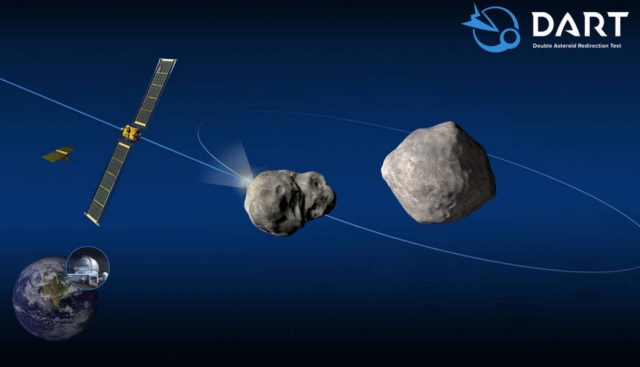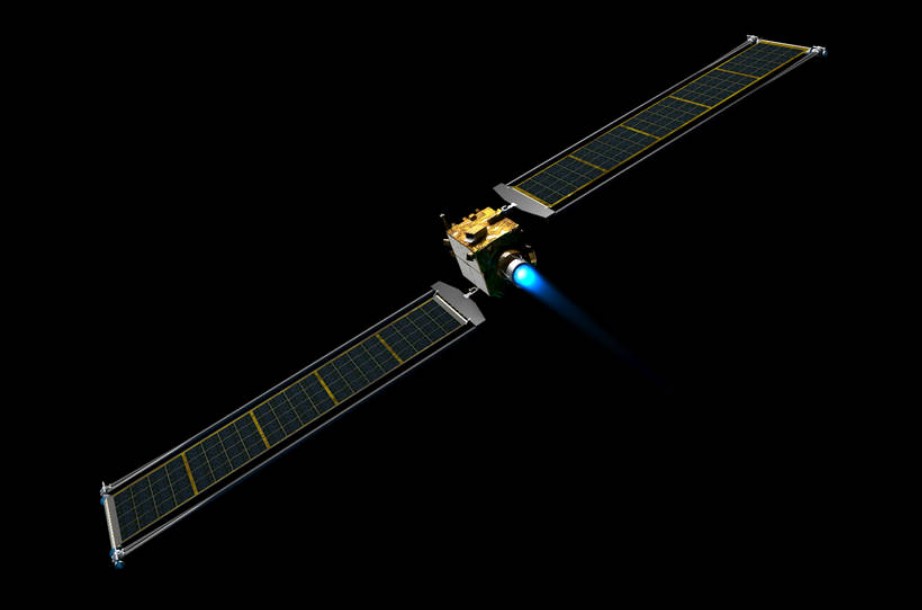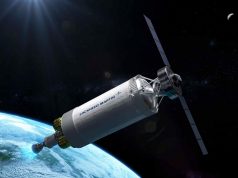
A team of scientist working on a NASA program that will aim to protect the Earth from asteroids is in the final stage of preparations for the launch of the mission.
Dubbed the Double Asteroid Redirection Test (DART), will be the world’s first planetary defense test mission, heading for the small moonlet asteroid Dimorphos, which orbits a larger companion asteroid called Didymos, and intentionally crashing into the asteroid to slightly change its orbit.
NASA has already filled the spacecraft with fuel, performed many of the final tests, and is running rehearsals as DART’s scheduled launch on November 23 approaches.
While neither asteroid poses a threat to Earth, DART’s kinetic impact will prove that a spacecraft can autonomously navigate to a target asteroid and kinetically impact it. Then, using Earth-based telescopes to measure the effects of the impact on the asteroid system, the mission will enhance modeling and predictive capabilities to help us better prepare for an actual asteroid threat should one ever be discovered.
“DART will be the first demonstration of the ‘kinetic impactor’ technique in which a spacecraft deliberately collides with a known asteroid at high speed to change the asteroid’s motion in space,” said Lindley Johnson, NASA’s Planetary Defense Officer. “This technique is thought to be the most technologically mature approach for mitigating a potentially hazardous asteroid, and it will help planetary defense experts refine asteroid kinetic impactor computer models, giving insight into how we could deflect potentially dangerous near-Earth objects in the future.”
Over the last year and a half, while following pandemic health and safety protocols, engineers built DART from a collection of parts to a fully assembled spacecraft. Engineers outfitted the spacecraft with the various technologies that the mission will test, including NASA’s NEXT-C ion propulsion system that was designed to improve performance and fuel efficiency for deep-space missions, and a flat, slotted high-gain antenna for efficient communication between Earth and the spacecraft.
During the summer and early September, engineers installed the spacecraft’s onboard camera DRACO (its only instrument), its two roll-out solar arrays that each unfurl to 28 feet, and the Italian Space Agency’s miniature satellite LICIACube that is designed to capture images of DART’s kinetic impact and its immediate aftereffects.
“It’s a miracle what this team has accomplished, with all of the obstacles in the way like COVID and the development of so many new technologies,” said Elena Adams, DART mission systems engineer at the Johns Hopkins Applied Physics Laboratory (APL) in Laurel, Maryland. “But the reason why we succeeded so far is because our team is excited, extremely sharp, and they genuinely want to show that if an asteroid was coming toward Earth, we could prevent a catastrophe.”

The DART spacecraft launch window begins November 24, 2021. DART will launch aboard a SpaceX Falcon 9 rocket from Vandenberg Air Force Base, California. After separation from the launch vehicle and over a year of cruise it will intercept Didymos’ moonlet in late September 2022, when the Didymos system is within 11 million kilometers of Earth, enabling observations by ground-based telescopes and planetary radar to measure the change in momentum imparted to the moonlet.
DART will deploy roll out solar arrays (ROSA) to provide the solar power needed for its electric propulsion system. The spacecraft will collide with the moonlet at a speed of approximately 6.6 km/s, with the aid of an onboard camera (named DRACO) and sophisticated autonomous navigation software. The collision will change the speed of the moonlet in its orbit around the main body by a fraction of one percent, but this will change the orbital period of the moonlet by several minutes – enough to be observed and measured using telescopes on Earth.


























